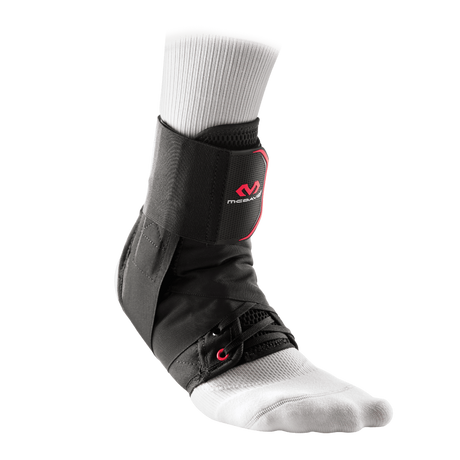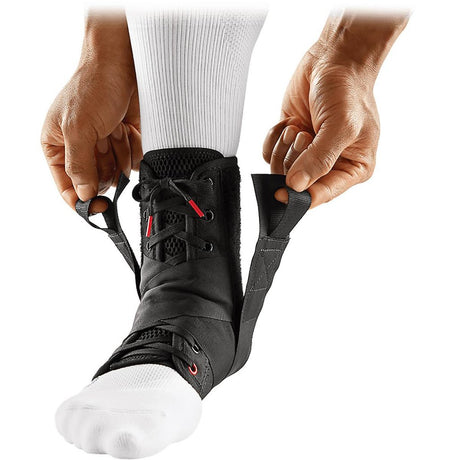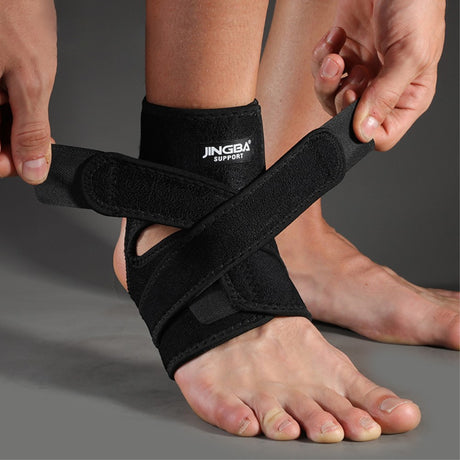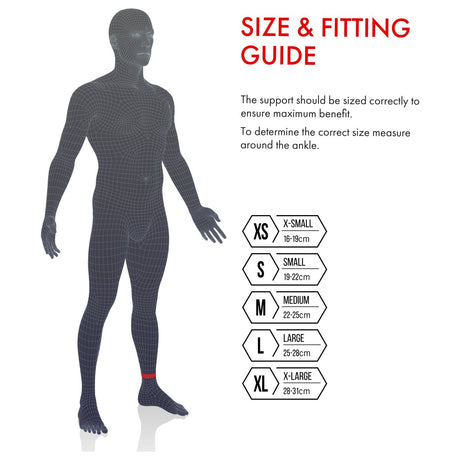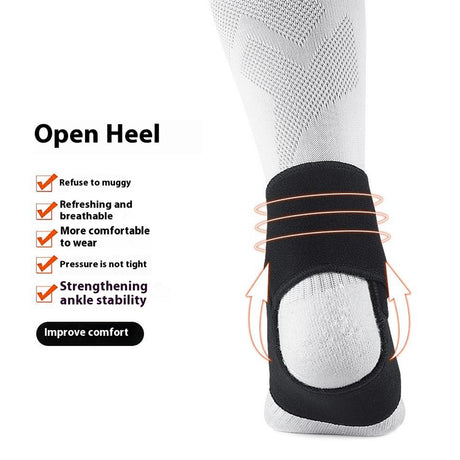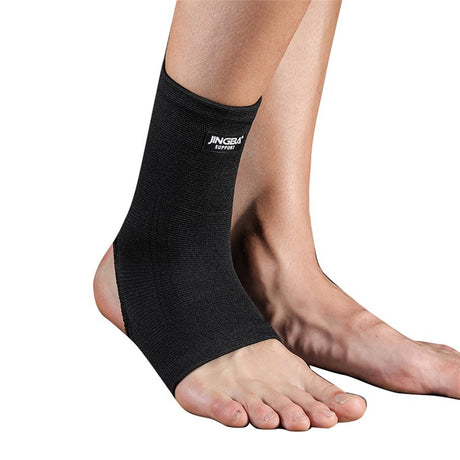Knee Support
The Functionality of Knee Supports
Knee supports and braces are designed to provide stability, relieve pain, and aid in the healing process. By compressing the knee joint and providing a certain degree of immobilization, they can help mitigate pain and inflammation.
Conditions Benefited by Knee Braces and Supports
Conditions such as ACL tears, meniscus injuries, patellofemoral pain syndrome, and general knee instability are some instances where knee supports can be particularly beneficial.
Selection Criteria for Effective Knee Braces
When selecting a knee brace, factors such as the level of support needed, the specific injury or condition being addressed, and the material of the brace all play a crucial role.
Back Support
Role of Back Supports in Maintaining Spinal Health
Back supports work by aligning the spine, reducing stress on the back muscles and intervertebral discs, and improving posture, which is crucial for long-term spinal health.
Targeted Relief for Chronic Back Pain with Support Products
For those suffering from chronic back pain, lumbar supports or ergonomic chairs can provide targeted relief and promote proper posture.
Features of High-Quality Back Supports for Patients
High-quality back supports should be adjustable, made of durable materials, and provide ample lumbar support while being comfortable for long-term use.
Wrist Support
Preventing Wrist Strains and Injuries Through Proper Support
Wrist supports stabilize the joint, distribute stress evenly, and reduce the risk of strain or injury during repetitive tasks.
Identifying the Right Wrist Support for Your Needs
The right wrist support should fit snugly without restricting circulation, provide the necessary stabilization, and be made of a comfortable, breathable material.
Integrating Wrist Supports into Daily Activities for Optimal Protection
Incorporating wrist supports into daily life, especially during activities known to put stress on the wrists, can prevent long-term damage and support healing.
Ankle Support
Significance of Ankle Supports in Mobility and Stability
Ankle supports offer protection, enhance stability, and are essential in the treatment and prevention of ankle injuries. They are particularly vital for individuals with a history of ankle issues.
Different Types of Ankle Supports for Various Conditions
There are ankle sleeves, lace-up braces, and rigid braces, each suited for different levels of support, from mild compression to significant immobilization for severe injuries.
Essential Factors to Consider When Buying Ankle Supports
Selecting the right ankle support requires consideration of the material, type of support (compression, brace, or sleeve), and specific features like straps or lacing systems that offer customizable tightness.
Heel Spur Solutions
Understanding Heel Spurs and Associated Discomfort
Heel spurs are typically characterized by a pointed, bony outgrowth on the heel bone and can cause severe pain, often managed or alleviated by using the right support products, such as insoles or heel cups.
Insoles and Socks: Supporting Your Heel and Alleviating Pain
Supportive insoles can redistribute pressure across the foot, while compression socks can improve blood flow and reduce swelling, providing much-needed relief for heel spur sufferers.
Lifestyle Adjustments to Complement Heel Spur Support Products
Along with using support products, incorporating lifestyle adjustments such as stretching exercises, wearing supportive shoes, and avoiding excessive pressure on the feet can aid in managing heel spur symptoms.
Knee Braces: Specialized Support
Exploring the Therapeutic Use of Knee Braces for Recovery
Knee braces come in various styles, each tailored for specific injuries or stages of recovery, providing stability and promoting healing.
Customizing Knee Brace Selection Based on Patient's Activity Level
Choosing a knee brace must take into account the patient's level of activity, with more rigid braces suited for low activity levels and flexible ones for higher activity levels.
Maintenance and Care Tips for Knee Braces to Ensure Longevity
Proper maintenance, such as regular cleaning and inspecting for wear and tear, is essential to ensure the longevity and effectiveness of knee braces.
FAQs on Support & Protection for Recovery and Well-being
Q: Why is support and protection gear necessary for recovery?
A: Support and protection gear plays a crucial role in managing pain, preventing further injury, and ensuring a rapid recovery. They are particularly important for individuals suffering from musculoskeletal issues or those recovering from surgery or injury, as they provide stability and support to the affected areas.
Q: What conditions can benefit from the use of knee braces and supports?
A: Knee braces and supports are beneficial for a range of conditions including ACL tears, meniscus injuries, patellofemoral pain syndrome, and general knee instability. They work by offering stability, pain relief, and aid in the healing process through compression and immobilization of the knee joint.
Q: How do you select an effective knee brace?
A: When choosing a knee brace, consider the level of support needed, the specific injury or condition being addressed, and the material of the brace. It’s important to ensure that the brace provides adequate support for your particular condition while also being made from high-quality materials for durability and comfort.
Q: How do back supports aid in spinal health?
A: Back supports aid spinal health by aligning the spine, reducing stress on back muscles and discs, and improving posture. This is especially beneficial for long-term spinal health and can provide targeted relief from chronic back pain, ensuring proper posture is maintained.
Q: What features should patients look for in quality back supports?
A: High-quality back supports should be adjustable to fit the user’s body, made from durable materials that last, provide ample lumbar support, and be comfortable for prolonged wear.
Q: In what ways can wrist supports prevent injuries?
A: Wrist supports help prevent strains and injuries by stabilizing the joint, evenly distributing stress, and reducing the risk of strain or injury during repetitive tasks. They're especially beneficial for people who engage in activities that put stress on their wrists.
Q: What should be considered when purchasing ankle supports?
A: Consider the material, level of support needed (compression, brace, or sleeve), and specific features like straps or lacing systems for customizable fit. The type of ankle support chosen should correspond to the condition it is meant to assist with, whether for mild support or significant immobilization for severe injuries.
Q: How can heel spur sufferers find relief?
A: Heel spur sufferers can find relief through supportive insoles and compression socks. These items help redistribute foot pressure and improve blood circulation to reduce swelling, providing relief from the pain associated with heel spurs. Additionally, lifestyle adjustments like stretching exercises and wearing supportive shoes can further manage symptoms.
Q: What factors determine the choice of knee brace based on activity levels?
A: The choice of knee brace should take into account the patient's activity level. More rigid braces provide high levels of support for low activity levels, while flexible braces are better suited for patients with higher activity levels.
Q: How can the life of a knee brace be extended?
A: Extending the life of a knee brace involves regular cleaning, proper usage, and routine inspection for wear and tear. Maintaining your knee brace ensures it continues to provide effective support and remains in good condition for as long as possible.































